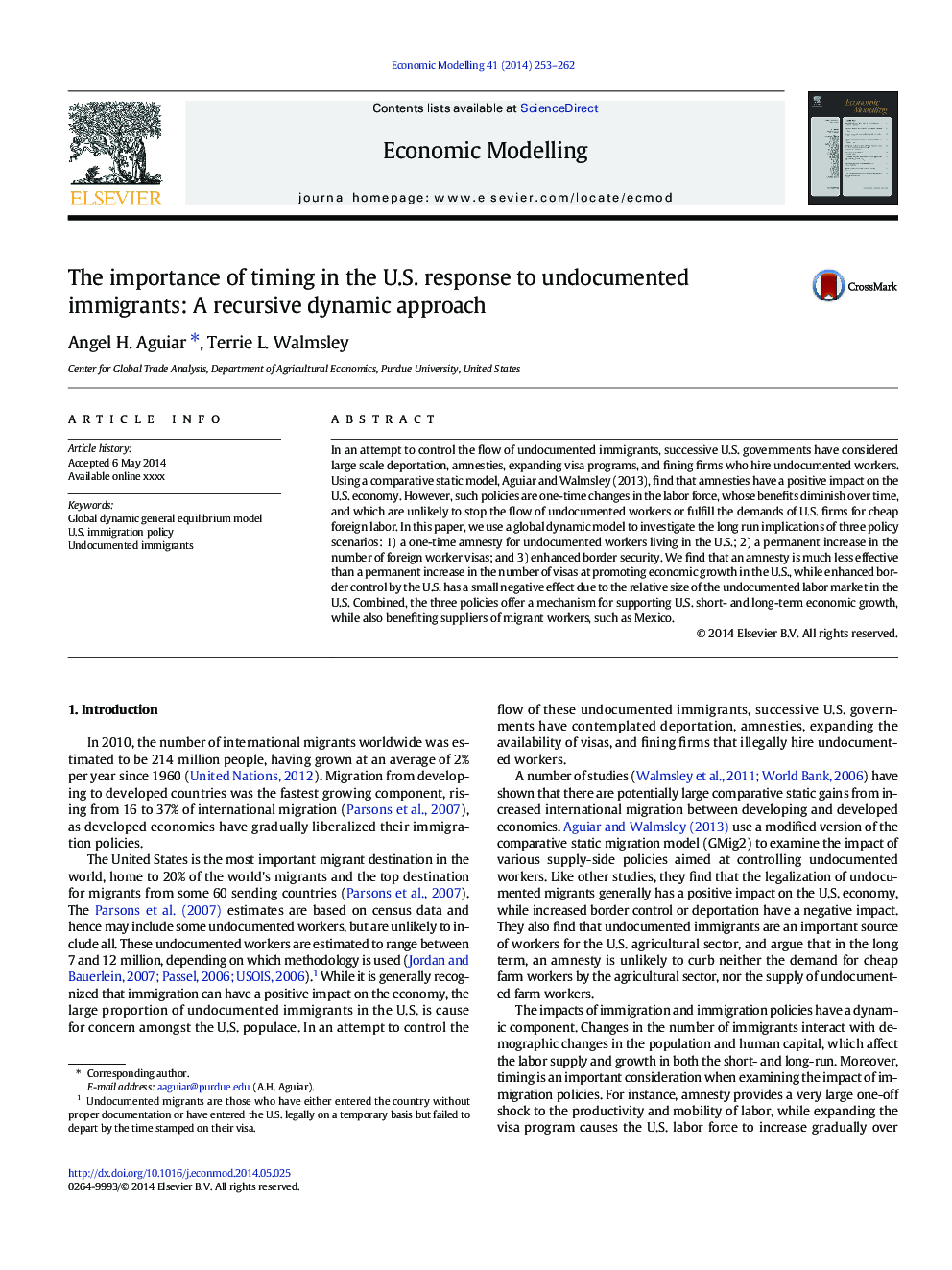| Article ID | Journal | Published Year | Pages | File Type |
|---|---|---|---|---|
| 5054134 | Economic Modelling | 2014 | 10 Pages |
Abstract
In an attempt to control the flow of undocumented immigrants, successive U.S. governments have considered large scale deportation, amnesties, expanding visa programs, and fining firms who hire undocumented workers. Using a comparative static model, Aguiar and Walmsley (2013), find that amnesties have a positive impact on the U.S. economy. However, such policies are one-time changes in the labor force, whose benefits diminish over time, and which are unlikely to stop the flow of undocumented workers or fulfill the demands of U.S. firms for cheap foreign labor. In this paper, we use a global dynamic model to investigate the long run implications of three policy scenarios: 1) a one-time amnesty for undocumented workers living in the U.S.; 2) a permanent increase in the number of foreign worker visas; and 3) enhanced border security. We find that an amnesty is much less effective than a permanent increase in the number of visas at promoting economic growth in the U.S., while enhanced border control by the U.S. has a small negative effect due to the relative size of the undocumented labor market in the U.S. Combined, the three policies offer a mechanism for supporting U.S. short- and long-term economic growth, while also benefiting suppliers of migrant workers, such as Mexico.
Keywords
Related Topics
Social Sciences and Humanities
Economics, Econometrics and Finance
Economics and Econometrics
Authors
Angel H. Aguiar, Terrie L. Walmsley,
